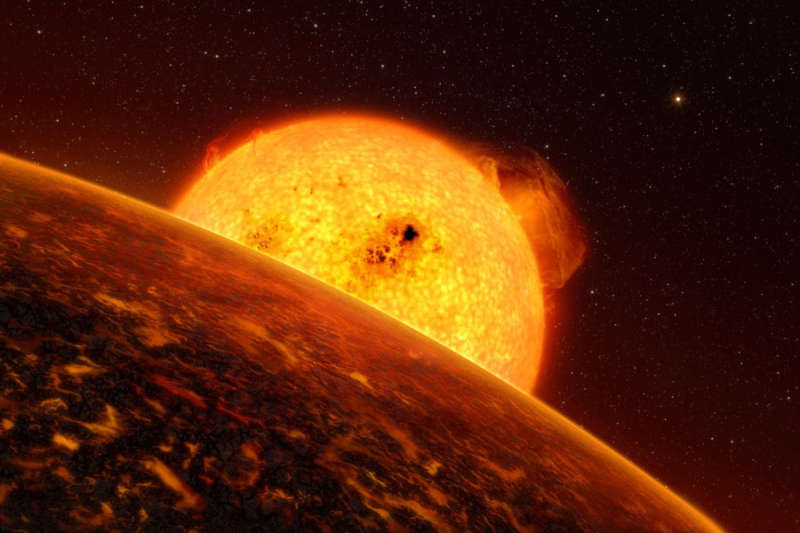
|
Credit & Copyright: ESO/L. Calcada
Explanation:
How similar is exoplanet CoRoT-7b to Earth?
The newly discovered
extra-solar planet is the closest physical match yet,
with a mass about five Earths and a radius of about 1.7 Earths.
Also, the home star to
CoRoT-7b,
although 500 light years distant, is very similar to our Sun.
Unfortunately, the similarities likely end there, as
CoRoT-7b orbits its home star well inside the orbit of
Mercury, making its year
last only 20 hours, and making its peak temperature
much hotter than humans might find comfortable.
CoRoT-7b was discovered in February by noting a predictable slight decrease
in the brightness of its parent star.
Pictured above, an artist's depiction shows how
CoRoT-7b might appear in front of
its parent star.
The composition of
CoRoT-7b remains unknown, but given its size and mass, it cannot be a
gas giant like Jupiter,
and is very likely composed predominantly of rock.
Future observations will likely narrow the composition of one of the first known
rocky
planets discovered outside
of our Solar System.
|
January February March April May June July August September October November December |
| ||||||||||||||||||||||||||||||||||||||||||||||||
NASA Web Site Statements, Warnings, and Disclaimers
NASA Official: Jay Norris. Specific rights apply.
A service of: LHEA at NASA / GSFC
& Michigan Tech. U.
Based on Astronomy Picture
Of the Day
Publications with keywords: extrasolar planet
Publications with words: extrasolar planet
See also:
- APOD: 2025 September 8 Á IRAS 04302: Butterfly Disk Planet Formation
- APOD: 2024 July 8 Á Exoplanet Zoo: Other Stars
- Temperatures on Exoplanet WASP 43b
- Epsilon Tauri: Star with Planet
- APOD: 2023 October 17 Á PDS 70: Disk, Planets, and Moons
- APOD: 2023 September 20 Á Methane Discovered on Distant Exoplanet
- APOD: 2023 June 6 Á Star Eats Planet
